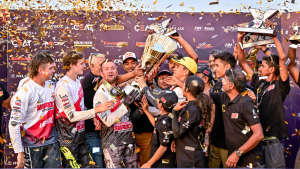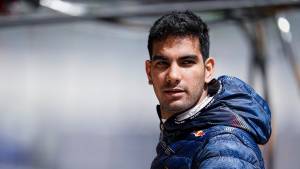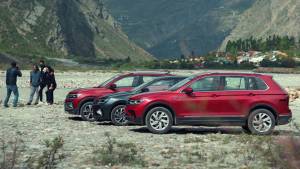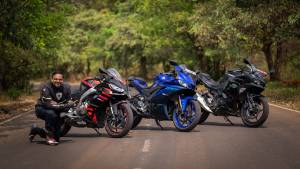Volkswagen Polo R Cup India: Five years on
There are some moments in time that simply must be captured with a photograph. For me, standing there at the Balewadi Sports Complex, listening to an engine note grow louder and louder, it was critical to capture the very first Race Polo as it came around the corner for the first time on an Indian racetrack. Just as I was about to squeeze the shutter and preserve successfully for all eternity what I believed to be a radical step as far as Indian motorsport went, things, as they so often do, went wrong. An elbow met with my cheekbone as an enthusiastic shutterbug, who clearly had the same idea as me, managed to capture that moment for posterity on his camera while I got a delightful photograph of the sky, a somewhat bruised face, and a rather sheepish apology. Of course the fact that I might not have captured that moment, although it saddens me to this very day, is immaterial. That a revolution had taken place in Indian motorsport could not be denied. The Volkswagen Polo Cup had taken off in India.
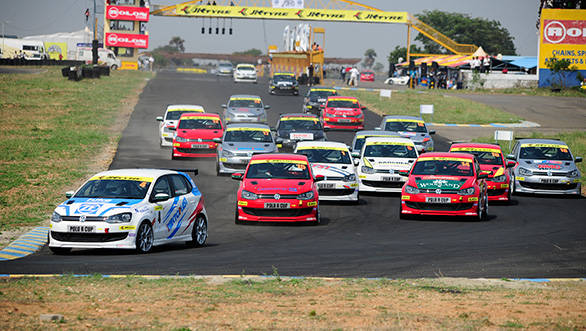 The first race of the 2014 Volkswagen Polo R Cup season kicks off at the Kari Motor Speedway
The first race of the 2014 Volkswagen Polo R Cup season kicks off at the Kari Motor Speedway
So what was the Volkswagen Polo R Cup all about? In 2010 it was the first single-make tin-top racing series with a proper plan - to groom a grid full of Indian drivers, select the best of them, and chart out a clear career path for him or her internationally. The winner of the Volkswagen Polo Cup would get to compete in a full season of the Volkswagen Scirocco Cup, and proving oneself there would open up a world full of international driving opportunities. But it wasn't just the fact that the reward of competing in a season of the Scirocco Cup was something covetous for an Indian racing driver. What was also impressive was the way the championship was implemented in India. After a gruelling selection process, a grid of drivers was selected, all ostensibly under the age of 24 years, and put in equal cars. The only differences were down to individual driver choice - tyre pressures and anti roll bar settings could be fettled with. No more. In addition, there was a level of professionalism that Volkswagen Motorsport India brought to the proceedings. If there was a dent or a nick somewhere, the parts would be replaced immediately, with no tinkering of any kind allowed. Essentially the race cars were in top form absolutely all the time.
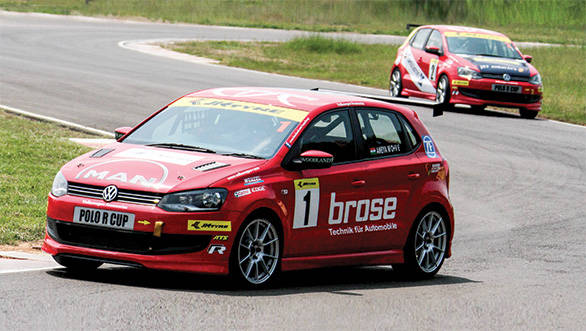 Ameya Walavalkar showed the grid a thing or two in the 2012 season - here's Avdumber Hede trying to catch up with him
Ameya Walavalkar showed the grid a thing or two in the 2012 season - here's Avdumber Hede trying to catch up with him
As the years progressed, the championship itself changed in form. The first two seasons featured 1.6-litre diesel-engined cars with a standard gearbox. Starting the 2012 season the cars got 1.4-litre twin-charged petrol engines that made 180PS and had paddle-shifts too. The latter was a move to ensure that the cars were on par with those used abroad. And also a move to ensure that when our drivers got to international racing series, it was one less factor that they needed to adapt to.
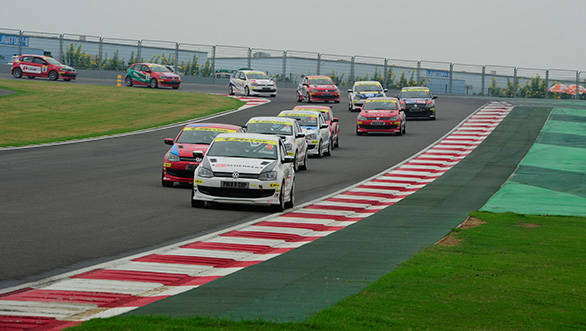 The Polo R Cup cars at the Buddh International Circuit in 2013
The Polo R Cup cars at the Buddh International Circuit in 2013
The changes weren't restricted to the cars though. The first year of the Polo Cup saw an extremely competitive grid - the battle for the championship was down to the wire with Sailesh Bolisetti, Vishnu Prasad and Parth Ghorpade fighting for the title. The second year saw a battle between Vishnu, Oshan Kothadiya, Avdumber Hede and Rahil Noorani. It wasn't until the last of the cars in the last race crossed the finish line that it became evident who had won the title. The competition was that close. But things began to change around 2012. Somehow the level of competition dropped. The old hands had either graduated to different series of racing abroad, as was the case with the likes of Parth Ghorpade. More importantly, by the time the third edition of the Polo Cup came around, there were more championships available for people to compete in domestically as well. The grid then got diluted a little. People racing in the Polo Cup were either rookies with no prior racing experience, or were graduates of the previous two years of the Polo Cup programme. And while it was extremely heartening to see rookies cut it at the head of the pack there's no denying the fact that the competition wasn't as tough as it could have been. Something that became painfully evident when Ameya Walavalkar (five-time National Karting Champion) competed in the 2012 season in the Masters category and beat the competition hands down. Then Jeffrey Kruger, a Polo Cup driver from South Africa, beat our racers on their home tracks on more than one occasion in 2013.
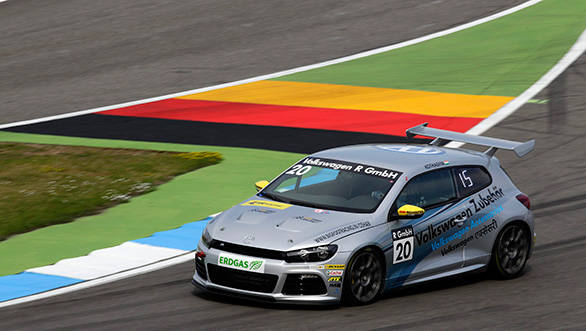 Competing in the Scirocco Cup abroad was the stepping stone into European touring car racing for our boys - here's Oshan Kothadiya in 2012
Competing in the Scirocco Cup abroad was the stepping stone into European touring car racing for our boys - here's Oshan Kothadiya in 2012
But credit must be given where it is due. One part of the success of the Polo Cup lies in the fact that it took our boys to the global motorsport stage. Sailesh Bolisetti, 2010 Polo Cup champion, didn't have the easiest of starts to his international racing career. Nonetheless once he was done with the Volkswagen Scirocco Cup, he managed to make the transition to British GT4 racing and a season in the Euro NASCAR Series after that. The results weren't exactly what he was hoping for, but he'd been given a leg up by VW Motorsport India.
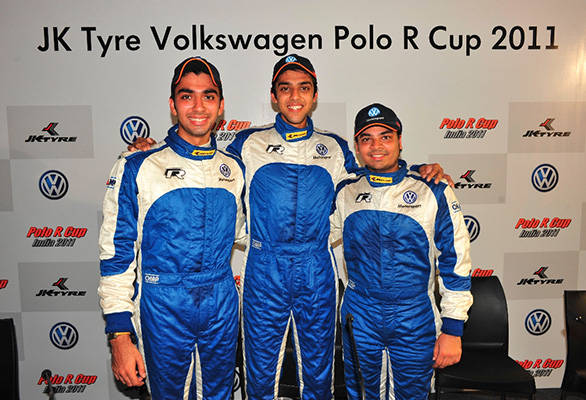 2013 Polo R Cup champion Rahil Noorani, with 2011 runner up Oshan Kothadiya and Munjal Savla
2013 Polo R Cup champion Rahil Noorani, with 2011 runner up Oshan Kothadiya and Munjal Savla
Another part of the Polo Cup's success can be gauged by the fact that it was able to give a rookie the opportunity to try his hand at racing internationally. If you look back to the first race of the Polo Cup at the Balewadi Sports complex in 2010, Oshan Kothadiya who had absolutely no prior racing experience, finished highest of the rookies in sixth place at the end of Race 1. At the end of the 2011 season, he finished runner up in the championship, managing to hold his own against Vishnu Prasad. And when in 2012 Prasad was unable to raise the required sponsorship to cash in on his prize of a season of the Scirocco Cup, the opportunity was sent Oshan's way. From only having dreamt of racing internationally, to actually doing it in the third year of his racing career - there's something to be said of that.
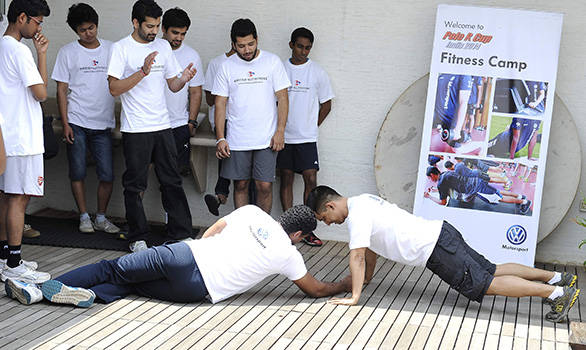 Driver training and fitness to be the focus of the championship in 2014
Driver training and fitness to be the focus of the championship in 2014
But perhaps the greatest measure of the success of a programme like the Polo Cup lies in the way it has managed to change the perception of racing in India. It might not be the only reason, but it has contributed in good measure to people wanting to toe the touring car line as a viable option for a racing career. As opposed to single seaters as the only way forward, with Formula 1 being the ultimate aim. And a part of this is also down to the fact that they have seen, in Aditya Patel, an example of just this. Patel, although not a part of the Polo Cup India programme, graduated from the German Polo Cup, to the Scirocco Cup and then became an Audi backed driver competing in the VLN Endurance Racing Series in 2012, the GT Masters Series in 2013 and the International GT Open in 2014. Talk to the Polo Cup drivers, and while some are in it for as long as they can sustain a career in racing, there are others who are gradually managing to make inroads into touring car series abroad.
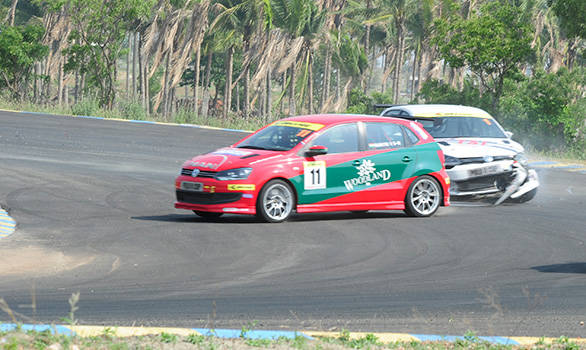 Action from the first round of the Polo Cup 2014 at the Kari Motor Speedway
Action from the first round of the Polo Cup 2014 at the Kari Motor Speedway
There are still two facts that need to be addressed. The first is that the transition from the Volkswagen Polo R Cup India, to the Scirocco R Cup appears to be too big a jump for our racers. 2012 champion Sandeep Kumar admitted that the learning curve at the 2013 Scirocco Cup was so steep it honed his racecraft considerably. Nonetheless, throwing our drivers into the deep end might not be the best way to go about things. When they compete in the Scirocco Cup, they have to contend with some serious competition, deal with learning to handle a new racecar that is Left Hand Drive, learn new tracks, all with very little practice time. Something that VW Motorsport India appears to have recognised. So 2013 Polo R Cup champion Rahil Noorani will first be put through his paces in the highly competitive JK FB02 cars on the domestic scene before being sent abroad to compete in the Scirocco R Cup.
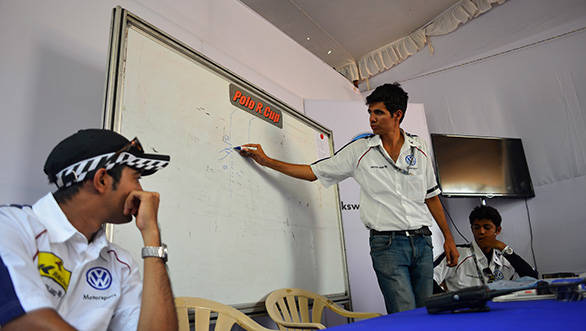 Old hands like Rayomand Banajee and Aditya Patel show the Polo R Cup drivers the ropes
Old hands like Rayomand Banajee and Aditya Patel show the Polo R Cup drivers the ropes
Another matter that needs to be addressed is ensuring that our drivers get up to speed, in more ways than one. Which is why Volkswagen Motorsport India now has switched their area of focus to driver training with a special emphasis on fitness. And while there isn't a direct penalty for drivers who aren't progressing as they ought to over the course of the season, there is a reward for drivers who do well, according to Sirish Vissa, head of VW Motorsport India.
That still doesn't address the problem of the level of competition. We have a couple of suggestions we'd like to see implemented in the Polo Cup India. The championship is already open to all drivers above the age of 15 from any part of the world, something that ought to be better publicised. We'd like to see more Jeffrey Krugers and Ameya Walavalkars competing in the series please. International drivers and our own drivers with racing experience could well serve to make the grid a lot more competitive. Improved levels of competition here will only help our drivers when they head abroad. Then there's the fact that the drivers who are competing in the Polo Cup today are nearly all rookies. There's no denying that there's no better place for rookie drivers to learn. At the same time, pulling in some more drivers with karting experience might also help matters a good bit. Perhaps a full grid that consists of a Rookie, Pro and Masters category is the way to go, then. The idea is to improve the level of competition here, so the driver who ultimately wins the Scirocco R Cup scholarship is used to closer racing and is able to hold his own abroad. And if some years hence I'm standing at a corner of a racetrack, training my lens on what just might be an Indian driver coming around the corner first in a Scirocco R Cup race, I know I'll gladly sacrifice a photograph and nurse another bruise on the face just for this.
Starts Rs 6.17 Lakhs
999cc
Automatic
76
175
16.47 Kmpl
